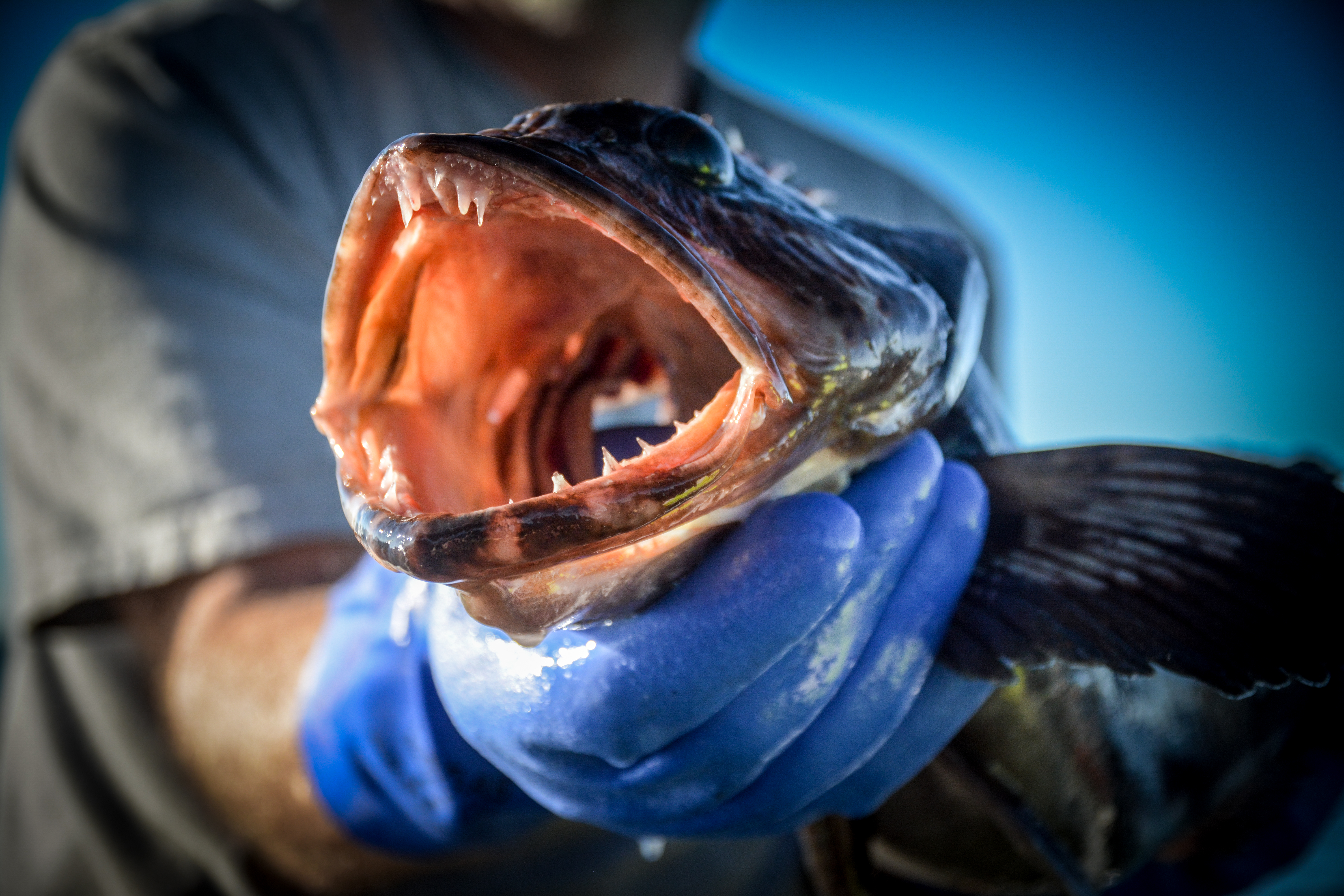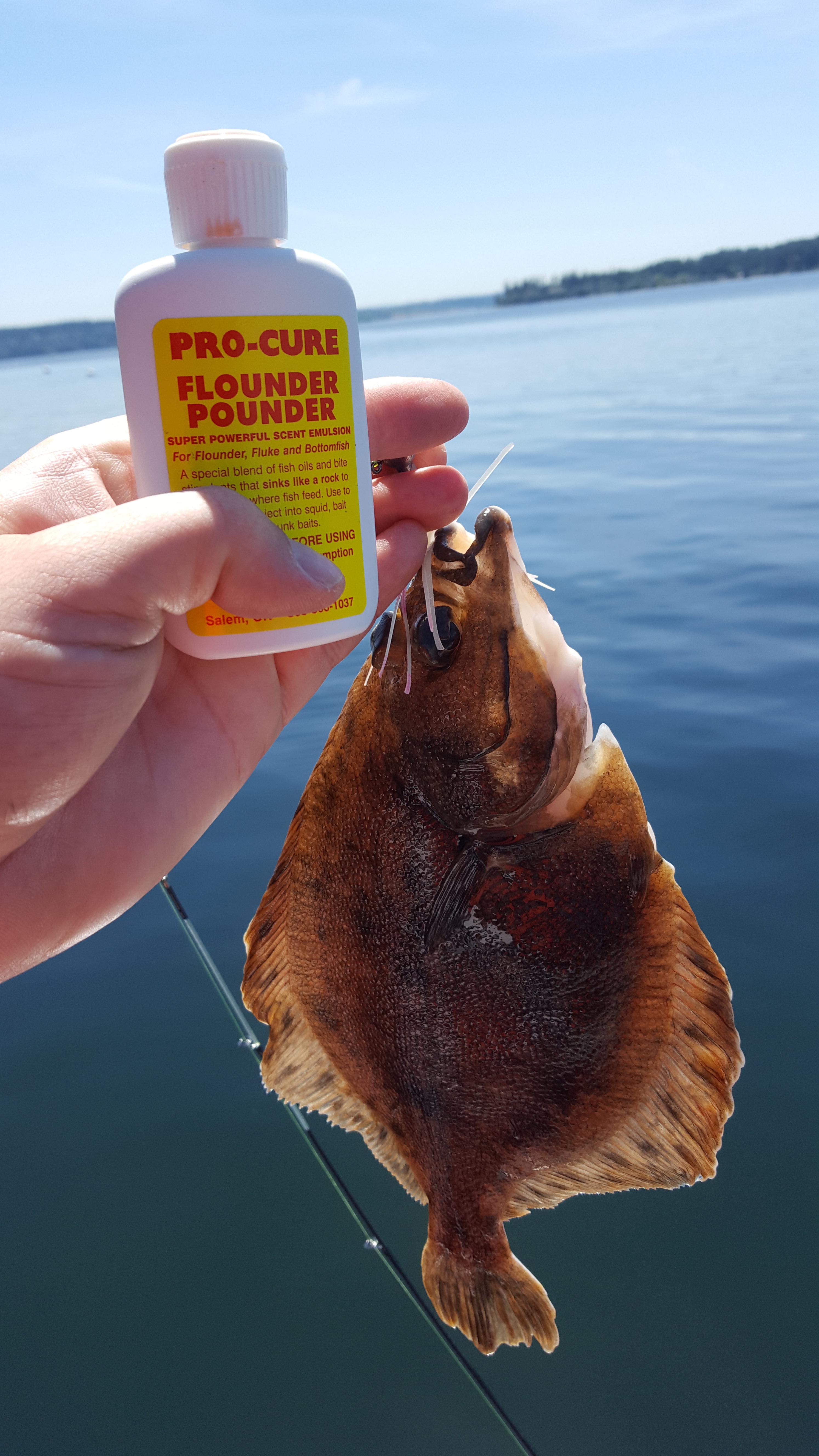Search
Latest Articles
Puget Sound Lingcod
by Jason Brooks, April 11, 2021
Most bottom fishing is done with heavy jigs. In shallower water and during slack tide a 3 to 4-ounce jig works really well. For strong tide exchanges and in deeper water where it might be hard to reach the bottom use jigs up to 8 ounces. Jigs with UV paint or glow in the dark paint do really well, especially on overcast days that often occur in May and June. You can use treble hooks and using a squid skirt to cover the hook adds action as well as it is a great place to put Pro-Cure Super Gels. Scent is crucial even for lead jigs as it will draw in fish as well as create a bite. Top scents are Octopus, Shrimp, and “Flounder Pounder” in the Pro-Cure Super Gel. If using a lead jig by itself then the Pro-Cure Super Sauce will stick to it much better with Anchovy and Herring being good choices. Rods should be fairly stout with a lighter action tip to feel the bit. Reels spooled with 30-pound Izorline XXX will land bottom fish and allow you to break off if the jig gets caught in the rocks.
Live bait is another option and can really get exciting. Start the day off by locating some sand flats in a cove or bay and drop a small ¼ ounce jig tipped with a piece of worm or shrimp to catch some bait. Small flounder, greenlings, sculpins and other bottom fish make for great lingcod bait. Some of these count towards your daily bottom fish limits so be sure to leave at least one fish for lingcod towards the limit.
Once you have a few fish then head to where the lingcod live. Using a heavy banana weight or mooching weight and a double mooching rig set up drop the live bait down to the bottom and then reel up a bit. The idea is to keep the live bait just off of the bottom and allow it to swim as you drift. You will notice the rod shaking a bit when a lingcod approaches as the baitfish gets nervous. If this seems a bit cruel to you then frozen herring also works well. Several years ago, while on a fishing charter for bottom fish in the ocean, we would use large blue and black label herring for lingcod. They worked well, but this year you will notice a lack of herring at the bait freezer. Once again you can use Pro-Cure scents and canned tuna, mix it up and then stuff it in a Brad’s Super Cut Plug or the new Spinfish by Yakima Bait Company. The canned tuna and scent mixture will leach out and bring fish to you and the action of these lures looks like a wounded herring or baitfish. You can also use a heavy jig head and a large softbait like those that are often used for halibut.
Look for pinnacles and rock outcroppings. A GPS sonar unit with a pre-loaded map will help immensely in finding fish. Once you find these hiding holes that lingcod live in then get ready to drop the gear. The hardest part will be to stay on top of the structure. Be sure to hit the waypoint so when you drift off you can get back on it easily. Lingcod like rocky areas where they can hide and pounce on their prey. Because of this be willing to lose some gear. Another option is to switch out the hooks to a Gamakatsu “assist” hook set-up. These are two hooks tied with a piece of braid that you loop through the eye of the jig. This puts the hooks at the top of the jig instead of the bottom and is less likely to get hung up or stuck in the rocks.
For where to go it all depends on what part of Puget Sound you plan to fish. There are great rock ledges and boulders along Point No Point and Whidbey Island. In fact, just about every island in Puget Sound has a rocky shoreline and that means lingcod. Bank bound anglers are stuck to the piers and jetty’s. Try the jetty by Edmonds, Everett and Seattle. If you have a small boat or kayak then Puget Sound is perfect for you. Be sure to check the wind report and stay close to shore, again working the outside of the jetties or along the rocky shorelines.
The most popular place in Puget Sound is near the Tacoma Narrows bridges, along the rock wall that makes up the shoreline at Titlow Park. But right across the sound, along the shoreline by Gig Harbor you will find large boulders where lingcod like to hang out. Those that fish the South Sound can head over to Toliva Shoal near Fox Island to fish the rocky bottom that juts out from the deep water of Puget Sound. This area is closed the rest of the year but open for the lingcod season. Other options are to fish near Pt. Evans and the rocky shoreline south of Gig Harbor.
When it comes to landing a lingcod most are lost right at the boat. Lingcod are known to grab a bait and not let go even if the hooks aren’t bit. The error comes when an anglers pulls the fish to the surface before the “net guy” is ready. Once the lingcod hit the surface they almost immediately let go and swim away. One tip to landing more lingcod is to reel slowly and keep tension on the fish once you can see it until the person with the net is ready. Only when the net is about to be dipped into the water is when the angler should lift the lingcod up to the surface. Since there is a slot limit it is best to net all lingcod so you can confirm the length before you injure it. Leave the gaff at home.
Puget Sound Marine Areas 5-10 open up May 1st for lingcod. You must fish in water shallower than 120 feet, with one exception and that is in Marine Area 5 when open for halibut. Keep in mind Marine Areas 6-10 do not have this exception on halibut days, which run through May 22nd on the weekends. The daily limit is one lingcod that must fit in the slot size of 26-36 inches. These are good “eater” size lings and since females are often the larger fish it ensures a future fishery. You are allowed up to 15 bottom fish per day, including the lingcod so if you use some for bait be sure to count them towards your daily limit. Rock fish are protected in Puget Sound and this is why you are required to have a descender device on board. Release all rock fish using the device. Lingcod don’t have the internal air bladder and you will notice that if they let go of the bait they can swim away easy.
Be sure to always have a descender device ready, either attached to an extra rod or to a downrigger. Know how to use these devices, which are required by law to be aboard the boat anytime you are fishing in the salt water. Safely release any unwanted fish or fish that cannot be retained to a proper depth. We need to take care of this fishery so it can continue to be a fun and great way to fill our freezers with great tasting fillets. With Puget Sound opening for the white fleshed fish be sure to get out and give it a try.

